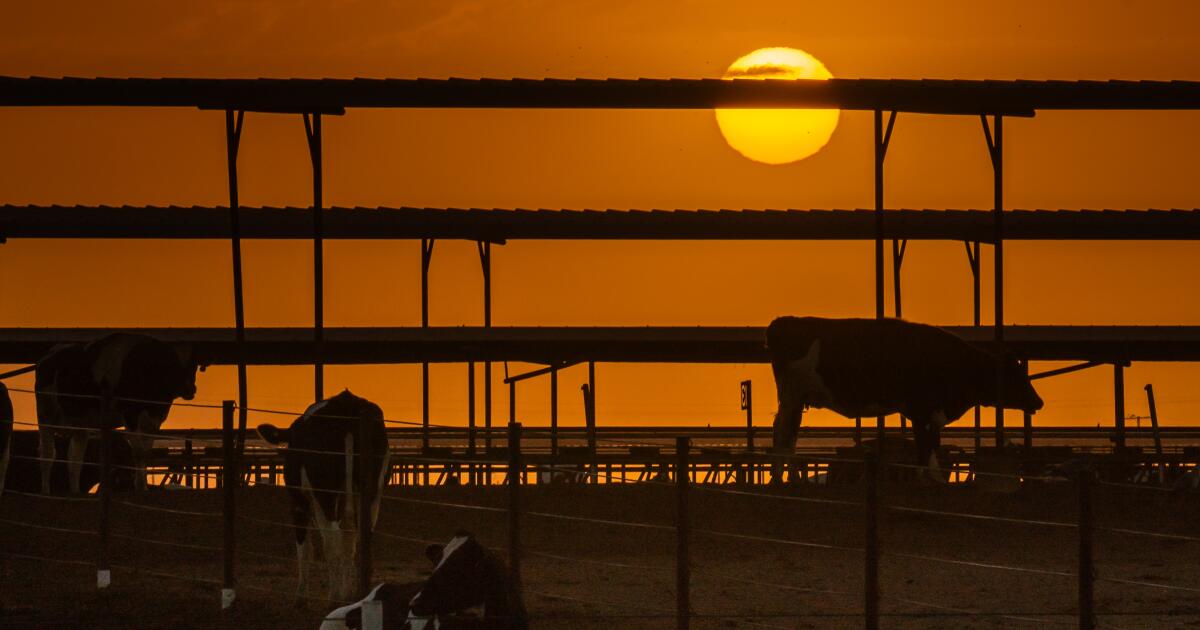Experts say it was bound to happen: The H5N1 bird flu that ravaged dairy herds in 13 states was inevitably going to arrive in California.
But exactly how it happened is still being investigated by the state.
However, Anja Raudabaugh — the chief executive of Western State Dairies, a trade organization for California dairy farmers — was able to confirm one of the stories that has been circulating.
At the end of July or early August, a dairy farmer in Tulare County reportedly sold some of his cows to a farmer in Idaho, which had been reporting infected cattle herds since early April.
The farmer in Idaho was not satisfied with the California cows and shipped them back, according to the story.
At some point during this interstate shuffle, the cows were infected and the virus was not identified until it was too late.
Where the breakdown happened is unclear.
Steve Lyle, a spokesman for California’s Department of Food and Agriculture, would not confirm the story, saying the investigation was ongoing. However, he did say genetic sequencing of the virus detected in California is “most similar to the strain found in cattle in the state of Idaho.”
Sydney Kennedy, a spokesperson for Idaho’s Department of Agriculture, seemed aware of the story. And although she would not speculate about where in the interstate transfer the virus was introduced, she confirmed that earlier this summer “an Idaho dairy received a shipment of cattle from California that were not accepted at the facility.”
She said when that happens, “it is up to each hauler or broker to understand and follow movement restrictions as they return to their home state or other destinations.”
So, what are the rules?
The U.S Department of Agriculture allows for the interstate transfer of cattle. However, since the beginning of the outbreak, it has required a veterinary certification for all lactating dairy cows crossing state lines — certificates showing the animals tested negative for the bird flu within seven days of transfer.
The movement of cattle across state lines is voluminous. According to Lyle, 275,000 to 300,000 cattle per year are imported into the state. Export numbers are similar.
There are roughly 1,300 dairy farms in California and 1.7 million dairy cows. According to the USDA, on Jan. 1 this year, there were roughly 5.1 million cows, steer, bulls and calves in the state.
Ray Souza, a former dairy farmer in Turlock, Calif., who once oversaw a farm with more than 1,000 cattle before retiring in 2015, said he moved cows frequently. Depending on milk production, he might have moved old cows off and new cows on every day, or every week. It all depended on productivity.
But since H5N1 was introduced into dairy cattle this year, the federal government and individual states have tried to limit the spread of the virus by securing state borders.
Idaho’s Department of Agriculture follows USDA guidance. It also encourages farmers to isolate “new additions” for three to four weeks.
“Idaho was the first to implement movement restrictions as well as quarantines of facilities,” Kennedy, the spokesperson, said. “Our dairies were the first in the country to follow quarantine measures — well before anything was put in place at a federal level.”
In California, there is no rule or guidance once animals are brought onto a farm from out of state, unless those animals are showing signs of the disease. In that case, the animals should be quarantined for 30 days.
In both states, there are exemptions for lactating dairy cattle destined for slaughter. They are allowed to move across state lines without proof of negative tests.
Raudabaugh said she knows more about the transfer of the infected cows to California than she can reveal. She suggested the failures were not the result of inadequate state or federal protocols.
“Where there is an infected herd, your veterinarian absolutely knows. There’s no room for guessing there,” she said. “It’s not plausible in my mind that it was unknown” that the cows were sick.
At the time of the transfer, California had no reported virus; Idaho did.
“This spring, as we considered movement restrictions, Idaho did not engage in blaming other states,” said Kennedy, the Idaho spokesperson. “That diminishes the unfortunate circumstances our nation’s dairies are facing.”
She said that “while interstate transportation of animals may contribute to disease transmission, this virus is spread through a multitude of paths, not all of which are understood.”

